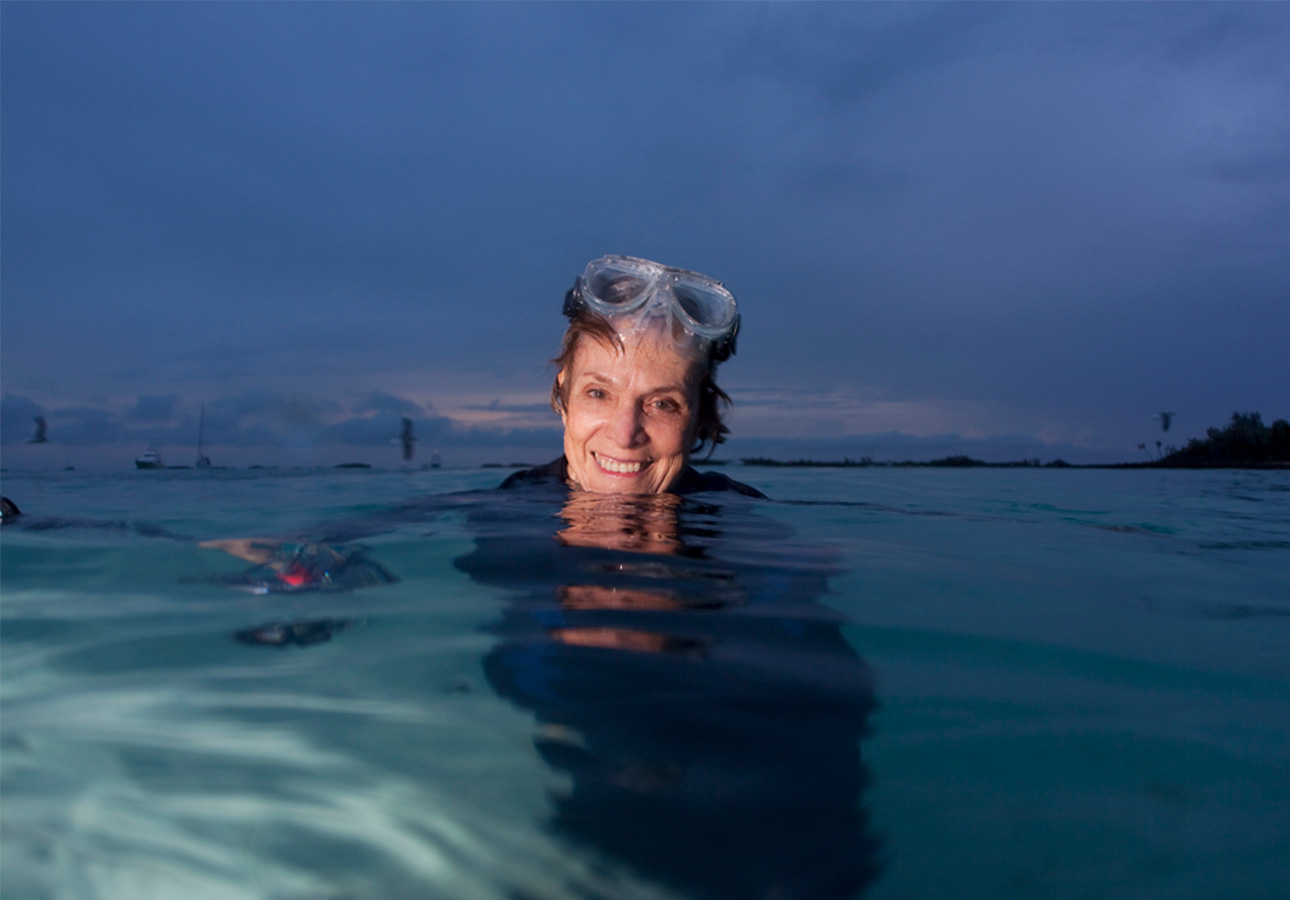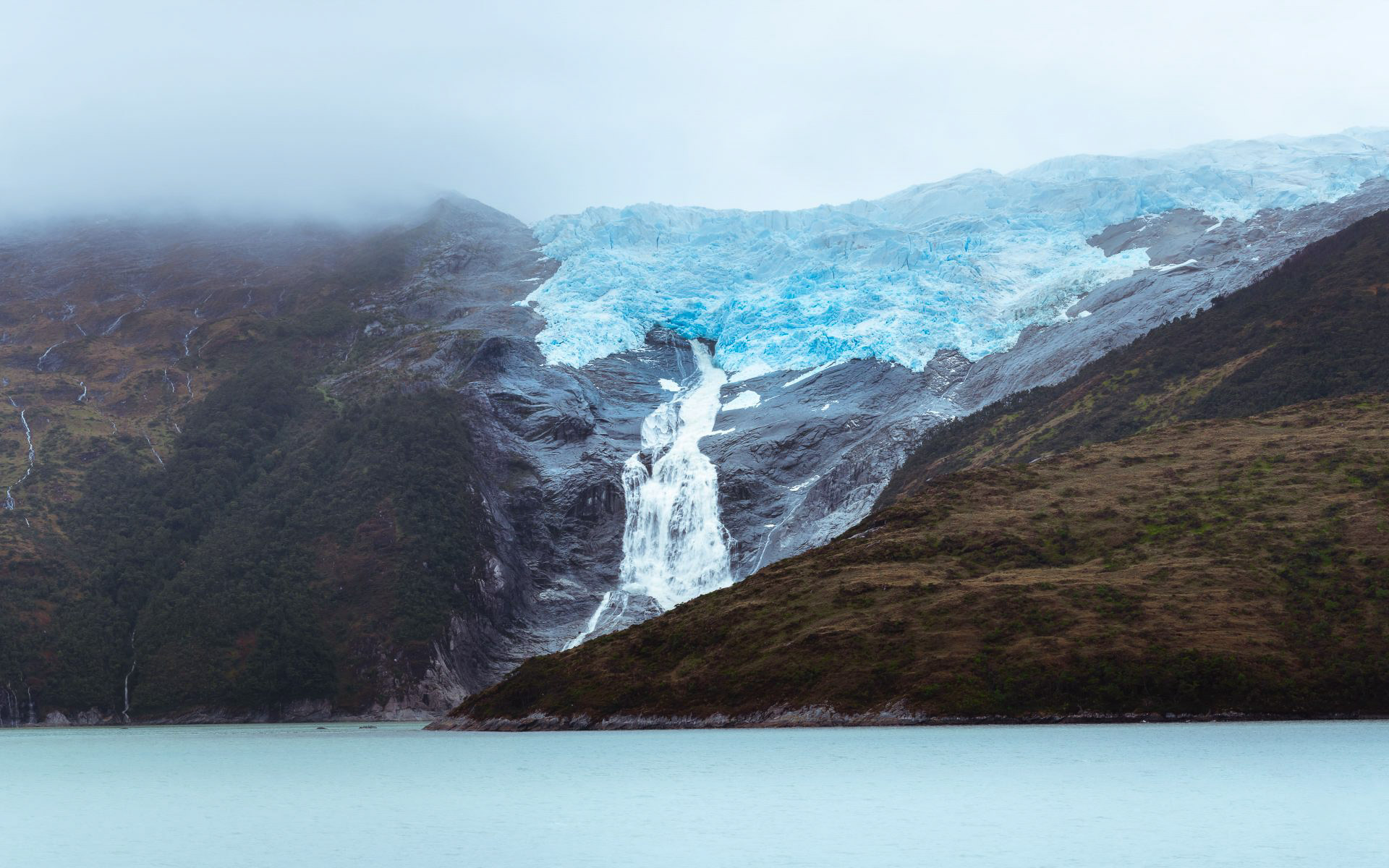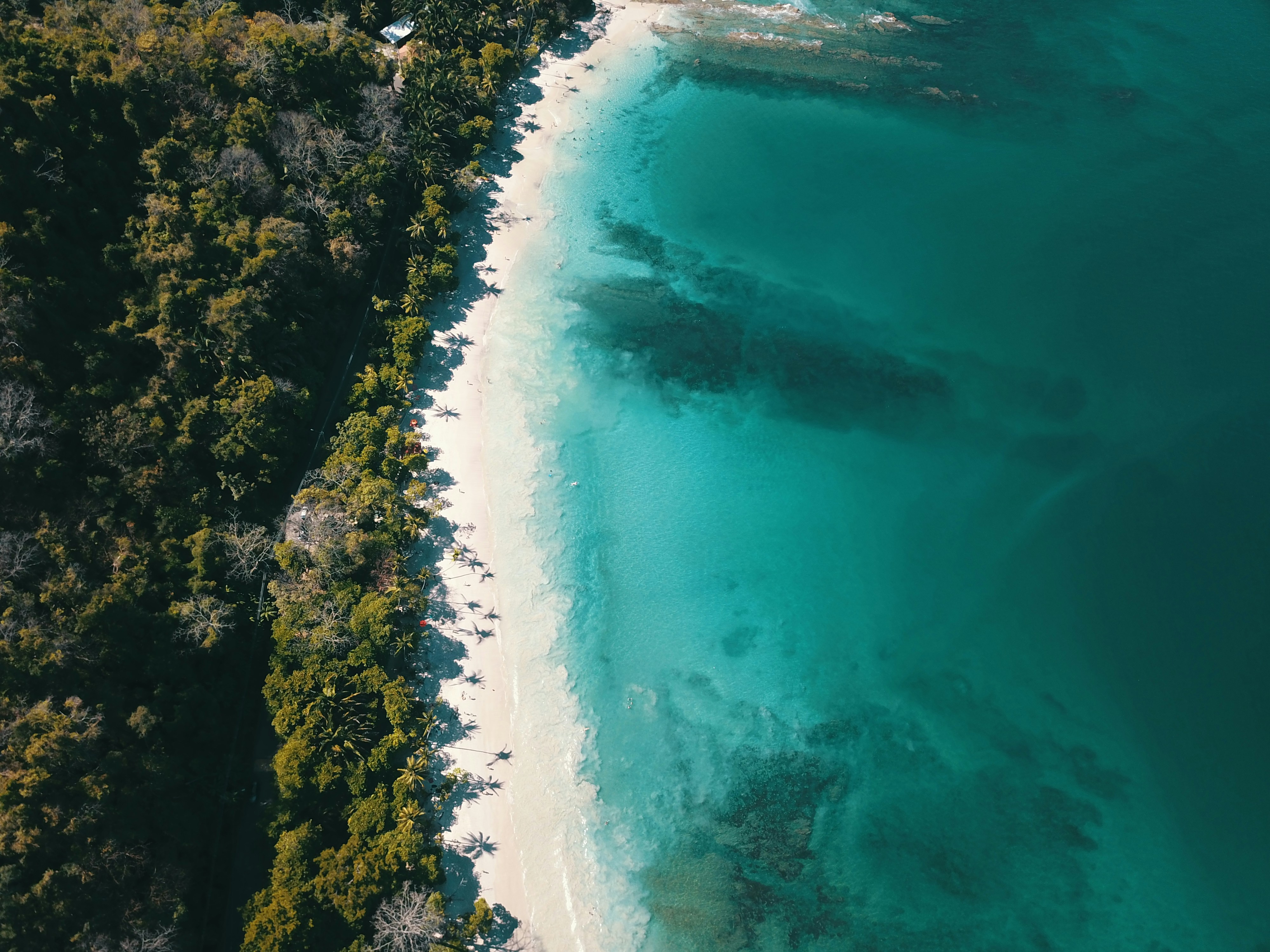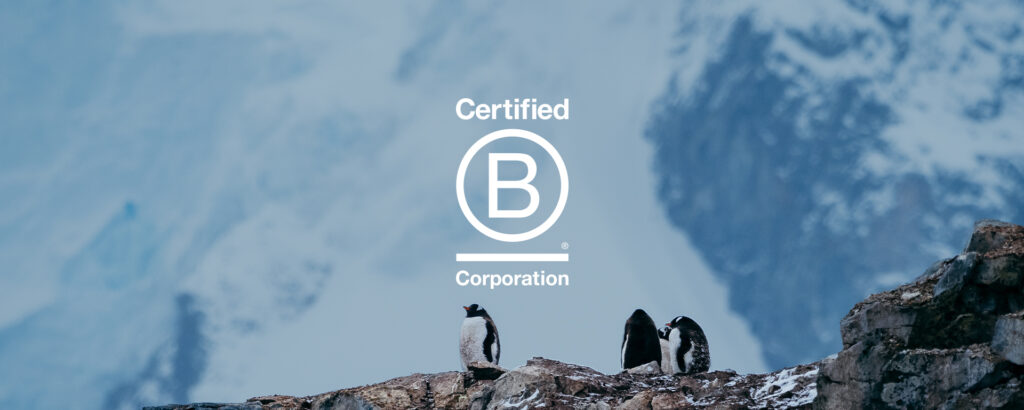Oceans support our planet and all of its inhabitants in so many ways. Covering more than 70% of the Earth's surface, oceans regulate the weather, generate most of our oxygen, feed us and keep the wheels of our economy turning. However, despite their importance, our oceans are facing unprecedented threats from pollution, overfishing and of course, climate change.
Led by Dr. Sylvia Earle, namesake of our new purpose-built ship, the Sylvia Earle, Mission Blue is leading the way in inspiring action to explore and protect the health of our oceans. Through its Hope Spots initiative, Mission Blue identifies and safeguards critical areas that support marine life. By designating areas as Hope Spots, it aims to raise awareness about the burning need for conservation and sustainable practices – including tourism and fishing – in these important but delicate ecosystems.
We visit a host of Hope Spots in the polar regions and beyond. In taking expeditioners to these special places, educating them through lectures and access to an Expedition Team comprised of leaders in their respective fields, and encouraging participation in our Citizen Science Program, we hope to create lifelong ambassadors for these critical regions and our blue planet.
Read on to learn about seven Hope Spots that Aurora Expeditions visits, why they deserve saving and our picks of the best expeditions to join to visit them responsibly.

But first, meet our Hero for the Planet
Dr. Sylvia Earle is a legendary marine biologist, oceanographer, explorer, author and lecturer with experience as a field research scientist, government official and director for several corporate and non-profit organisations.
She was the first woman to become chief scientist of the U.S. National Oceanic and Atmospheric Administration and is currently President and Chairman of Mission Blue and the Sylvia Earle Alliance. She is a National Geographic Society Explorer in Residence, and is called "Her Deepness" by the New Yorker and New York Times, "Living Legend" by the Library of Congress, and was named as the first “Hero for the Planet” by Time magazine in 1998. She is also part of the group Ocean Elders, which is dedicated to protecting the ocean and its wildlife.
1. Svalbard Archipelago Hope Spot
Situated in the middle of the Arctic Ocean between Norway and the North Pole, the Svalbard Archipelago is the ultimate winter wonderland, which is teeming with life both above and below the water. Despite its harsh conditions, it is a popular breeding ground for many marine mammals and seabirds, who flock to the archipelago in the thousands over summer. Sadly, Svalbard is facing some of the most extreme effects of global warming in the world, with sea ice melting at an alarming rate.
Led by an experienced Expedition Team comprised of specialists including Naturalists, Geologists and Historians, discover Svalbard while enjoying meaningful encounters with endemic wildlife on our Jewels of the Arctic expedition.
2. Northwest Passage Hope Spot
The iconic Arctic route connecting the Atlantic Ocean to the Pacific Ocean has gained attention in recent years because of rapidly melting sea ice. Increased access to this passage, which the early explorers struggled to forge a path through, has far-reaching implications. Mission Blue's designation of the Northwest Passage as a Hope Spot aims to promote responsible navigation, management and tourism in this fragile ecosystem.
Gain a greater appreciation of the perils legendary explorers like Franklin, Amundsen and Larsen faced and gain insights from local indigenous people on our Northwest Passage expedition.

3. Chilean Fjords & Islands Hope Spot
The Chilean Fjords and Islands are a labyrinth of fjords, channels and islands along Chile’s southern coast. The wild and pristine landscapes here serve as a vital feeding and breeding grounds for countless marine species, from whales, dolphins and seals to diverse coral and invertebrates on the seafloor. Significantly, several species are unique to the area.
The biggest threats to marine life here are industrialisation, overfishing and damage from bottom trawling. Thankfully, the Chilean government has stepped in and is in the process of establishing Marine Protected Areas (MPAs) throughout the region – testament to what can be achieved when people take action and enough pressure is applied!
Explore the fjords and coast of southern Chile by sailing along the legendary Beagle Channel and enjoy the splendid scenery of fjords and channels flanked by majestic mountains on our Patagonia & Chilean Fjords expedition.
4. Patagonian Shelf Hope Spot
Stretching along the southern coast of Argentina, the Patagonian Shelf is one of the widest continental shelves in the world, encompassing the Falkland Islands or the Islas Malvinas. This region boasts a true underwater paradise, with rich and diverse marine life including penguins, seals and whales, in addition to extensive kelp forests. The confluence of hot and cold wind-driven currents here are at the heart of a complex marine system that supports diverse species including the southern rockhopper penguin and 16 endemic bird species.
While marine life in this vast region faces threats from overfishing, plastic and chemical pollution and climate change, the Argentinian is working towards conserving the Falklands~Malvinas, starting with the establishment of a Marine Protected Area (MPA).
Discover the fascinating history of the Falklands~Malvinas and be awed by the diverse wildlife on display on our Falklands, South Georgia & Antarctic Peninsula expedition.
5. Golfo Dulce Hope Spot
Golfo Dulce is a unique tropical fjord nestled along the coast of Costa Rica, a country that boasts an enormous amount of biodiversity for its modest size. Its pristine mangrove forests and tropical waters are home to many endangered species including humpback whales and sea turtles. This incredible ecosystem also hosts a nursery for the critcally endangered scalloped hammerhead shark. Mission Blue's recognition of Golfo Dulce as a Hope Spot emphasises the importance of protecting this haven of biodiversity and advocating for sustainable tourism and fishing practices to safeguard its biodiversity.
On our Costa Rica & Panama Canal discovery voyage, you'll enjoy walks led by experienced local guides, who will help you appreciate the incredible diversity of this hidden gem.

6. Coiba and Cordillera de Coiba Hope Spot
The Coiba National Park and surrounding Cordillera de Coiba lie off the coast of Panama. This unique region is a UNESCO World Heritage site and supports an astonishing amount of marine life, including the second-largest coral reef system on the American Pacific coast, orcas, hammerhead sharks, whale sharks and humpback whales. It is also a nursery for fish and other sea creatures that are a source of food for those further up the food chain.
With the planned expansion of the Cordillera de Coiba Marine Protected Area (MPA) to three times its current size, Panama is leading the way in conservation, and is set to be ahead of the 30% by 2030 goal that world leaders have set.
Savour unparalleled wildlife viewing opportunities on our Costa Rica & Panama Canal discovery voyage. Explore above the water on guided walks, paddling excursions and Zodiac cruises, and below the water by snorkelling or scuba diving.
7. Argyll Coast and Islands Hope Spot
The Argyll Coast on the west coast of Scotland is a region of exceptional natural beauty and ecological significance. With its stunning coastline, ancient forests and diverse marine habitats, the Argyll Coast plays a critical role in supporting countless marine species. Its habitats, ranging from kelp forests to seagrass beds to rocky shores, support seals, otters, dolphins, a variety of seabirds and an even bigger variety of fish.
What's more, the region's ancient forests and peatlands help to diminish the effects of climate change via carbon sequestration, making conservation of this designated Hope Spot crucial for global efforts to combat global warming.
Sail through the stunning Argyll Coast and Islands on our Wild Scotland discovery voyage. Enjoy Zodiac cruises under towering sea cliffs and explore caves and other geological marvels.

Protecting the World's Wild Places
Aurora Expeditions has been dedicated to sustainability since its inception and is now honoured to be a Certified B Corporation™.
We embrace a responsibility to inspire, educate and advocate for the protection, preservation and regeneration of wild places across the globe, to inspire a global community of ambassadors for the planet. Not only do we care about reducing our footprint environmentally, we are taking real actions for the care of the planet and are doing more to help make a positive impact on the planet.


